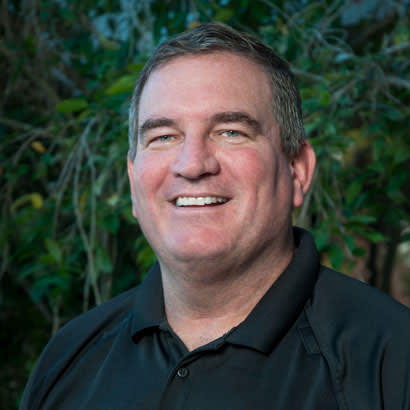
Greg Brown grew up loving nature. As a kid, he spent most of his time outdoors until the sun went down, while summer breaks meant working in his dad’s side business, mowing lawns. Following high school, Brown attended the University of South Florida, where he earned a bachelor’s degree in biology. His plan was to attend medical school, but fate had other plans for him. Instead, he married and bought his dad’s lawn-care business and gradually expanded it into landscape design. In 1997, he jumped onto the park and recreation track and accepted a job with the City of Largo Recreation, Parks and Arts Department located in Pinellas County, Florida. Brown became a board-certified master arborist and, in 2000, was named parks superintendent. In his role, Brown is responsible for nature park programming, park planning, parks maintenance, athletic maintenance, state roadway beatification, budgeting, Largo’s urban forest and the county’s largest holiday light show.
Parks & Recreation magazine recently talked to Brown about the important role conservation plays in his community, what makes his job so rewarding and what changes he sees for his agency and community in 2018.
Parks & Recreation: How does conservation fit into what you do at the agency?
Greg Brown: Conservation is really important to us. Probably our biggest challenge with that are exotics. Although we deal with snakes down south, our biggest problem is with exotic plants and trees, because they lower the biodiversity in some of our properties. Over the 20 years I’ve been here at the agency, we’ve spent millions of dollars to combat those exotics that threaten our environment. We do that so we have more native animal, tree and plant species on that same acre of land.
With exotics, we have something called the air potato here. Its vine grows up to 70 feet a year and drops these big potatoes that help spread throughout our parks. The University of Florida developed a beetle, and we were the first (city of Largo) to release it to combat the air potato. Every news agency you can think of — from newspapers to radio to TV — covered [our story about] releasing the air potato beetles into the wild and how they have worked beautifully.
P&R: What are some challenges you face in your job? How do you overcome them?
Brown: Probably one of the biggest challenges is motivation of the city budgets. Our time is always spent [figuring out] how we can make the parks system in the city better. And, we’re constantly vying for positions against public safety and a couple other departments to make sure that we’ve got what we need to maintain and keep improving the parks system. And I think an important one for me is hiring and retaining qualified staff — that’s big. I mean, you can have the best facilities in the world, but they won’t be nice for very long if you don’t have great staff to take care of and watch out for those facilities.
P&R: What do you find the most rewarding about what you do and why?
Brown: First, I think what I find most rewarding is that when we’ve planned and built something for the park, or park amenities, and we need to go out and talk to the people who are using it and we hear that it’s well-used and well-loved; that’s probably my No. 1 reward that I get back from the community. Secondly, we’re in the most urbanized county in Florida — Pinellas County. Being the keeper of the urban forest, I think, is one of our most cherished assets we take care of in the city. Trying to regain as much of the urban forest as we can — and protecting what we have — are very important and the most rewarding to us.
P&R: What changes do you see happening in parks and rec or in your own agency in 2018?
Brown: It’s been coming the last several years, but I’d say improved value in the roles for park and recreation professionals in the holistic health of their citizenry. People value their time outside; they need that peace, quiet and recovery that nature can bring. And, that’s definitely important to us. In the last three years, we’ve added five fitness zones in our parks. Those are free and offer things like body-weight workout gyms that are outside in the shade. They’ve been well-loved and well-used and will continue to be. Circling back to urban forestry, that’s been very important for us. But, it’s a constant battle between building the gray infrastructure — you know, new buildings, roads and all that — and finding space for the green parts of the city that everybody loves. And lastly, the other challenge is to just continue to keep being on the economic development side of the city that makes people just want to stay because of our facilities and the aesthetics that our parks and trees offer, as well as what makes people from the outside want to come here.
— Vitisia Paynich, Freelance Writer for Parks & Recreation magazine

